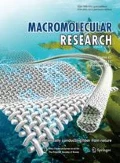Abstract
Liquid crystal (LC) emulsions composed of multi-lamellar structures were formulated to enhance the percutaneous absorption of retinyl palmitate across skin barriers. The LC emulsions were prepared by hot process emulsification of an aqueous phase and an oil phase containing retinyl palmitate. Percutaneous absorption levels across synthetic membranes were determined by Franz cell diffusion study. The diffusional absorption level of the oil phase in the LC emulsions was also visualized by fluorescence imaging of Nile red-containing emulsions on synthetic membranes. Transport of retinyl palmitate across pig skin was fluorescently visualized. In vitro cell culture study showed that the LC emulsions enhanced cellular metabolism and proliferation of fibroblasts in comparison to the plain emulsion. The multi-lamellar structures composed of aligned fatty alcohol chains were revealed using freezefracture scanning electron microscopy and polarized light microscopy. The LC emulsions showed increased retention at the membrane as well as at the acceptor in comparison to plain oil-in-water emulsions. Total fluorescence intensity at the membrane with the LC emulsions was higher compared to plain emulsions. Confocal laser scanning microscopy (CLSM) of cryo-cut cross-sections revealed that Nile red was highly localized in the epidermis layers, particularly in the stratum corneum in comparison to the plain emulsions. LC emulsions also enhanced transport of retinyl palmitate at cellular levels, in addition to facilitating percutaneous absorption across dermal layers.

Similar content being viewed by others
References
P. M. Elias, J. Invest. Dermatol., 80, 11 (1983).
H. D. Onken and C. A. Moyer, Arch. Dermatol., 87, 11 (1963).
P. M. Wertz and D. T. Dowing, Science, 217, 11 (1982).
P. M. Elias, Arch. Dermatol. Res., 270, 11 (1981).
M. A. Lampe, A. L. B. Urlingame, J. Whitney, M. I. Williams, B. E. Brown, E. Roitman, and P. M. Elias, J. Lipid Res., 24, 11 (1983).
P. M. Elias, J. Invest. Dermatol., 80, 11 (1983).
G. Imokawa, G. Kuno, and M. Kawai, J. Invest. Dermatol., 96, 11 (1991).
G. Grubauer, K. R. Freingold, R. M. Harris, and P. M. Elias, J. Lipid Res., 30, 11 (1989).
G. Imokawa, S. Akasaki, H. Hattori, and N. Yoshizuka, J. Invest. Dermatol., 87, 11 (1986).
T. Förster and W. von Rybinski, in Modern Aspects of Emulsion Science, The Royal Society of Chemistry, Cambridge, 1998, p 395.
S. E. Friberg, J. Soc.Cosmet. Chem., 41, 11 (1990).
Y. Liu and S. Friberg, J. Colloid Interface Sci., 340, 11 (2009).
J. Vilasau, C. Solans, M. Gómez, J. Dabrio, R. Mujuka-Garai and J. Esquena, Colloids Surf. A: Physicochem. Eng. Asp., 384, 11 (2011).
T. Guillaume, M. Sophie, T. Phou, G. Antoine, N. Maurizio and B. Christophe, J. Phys. Chem. B, 112, 11 (2008).
H. Iwai, J. Fukasawa, and T. Suzuki, Int. J. Cosmet. Sci., 20, 11 (1998).
W. P. Zhang, and L. Y. Liu, China Surfactant Detergent & Cosmetics, 40, 11 (2010).
W. P. Zhang and L. L. Zhu, China Surfactant Detergent Cosmetics, 39, 11 (2009).
J. Jiao, D. G. Rhodes, and D. J. Burgess, J. Colloid Interface Sci., 250, 11 (2002).
C. E. Lee and N. H. Baek, Korean Patent 10-1997-0015992, p 2 (1997).
M. E. Carlotti, S. Sapino, M. Gallarate, M. Trotta, R. Cavalli, and E. Ugazio, J. Dispers. Sci. Technol., 29, 11 (2008).
S. H. Yoon, K. C. Gupta, J. S. Borah, S. Y. Park, Y. K. Kim, J. H. Lee, and I. K. Kang, Langmuir, 30, 11 (2014).
O. H. Mills and A. H. Kligman, Semin. Dermatol., 1, 11 (1982).
B. D. Park, J. K. Youm, S. K. Jeong, E. H. Choi, S. K. Ahn, and S. H. Lee, J. Invest. Dermatol., 121, 11 (2003).
K. Y. Kyoung, U. K. Jee, and W. G. Cho, J. Korean Pharm. Sci., 37, 11 (2007).
M. Stefania, M. Sergio, and M. Maura, Colloids Surf. A: Physicochem. Eng. Asp., 228, 11 (2003).
H. Iwai, J. Fukasawa, and T. Suzuki, Int. J. Cosmet. Sci., 20, 11 (1998).
W. Zhang and L. Y. Liu, J. Cosmet. Dermatol. Sci. Appl., 3, 11 (2013).
S. Kenji, T. Uchida, W. R. Kadhum, S. Kanai, H. Todo, T. Oshizaka, and K. Sugibayashi, Eur. J. Pharm. Sci., 67, 11 (2015).
N. Sumalatha, P. Srinivas, and K. Isadore, AAPS PharmSci-Tech, 15, 11 (2014).
W. R. Lee, S. C. Shen, A. Ibrahim, I. A. Aljuffali, Y. C. Li, and J. Y. Fang, Pharm. Res., 31, 11 (2014).
J. H. Kim, J. A. Ko, H. J. Park, G. H. Shin, J. T. Kim, D. D. Cha, and J. H. Cho, J. Agric. Food Chem., 62, 11 (2014).
W. Johannes and K. Daniela, Skin Pharmacol. Physiol., 27, 11 (2014).
A. L. Otto, J. W. Wiechers, C. L. Kelly, J. C. Dederen, J. Hadgraft, and J. du Plessis, Skin Pharmacol. Physiol., 23, 11 (2010).
NTP technical report on the photocarcinogenesis study of retinoic acid and retinyl palmitate [CAS Nos. 302-79-4 (Alltrans-retinoic acid) and 79-81-2 (All-trans-retinyl palmitate)] in SKH-1 mice (Simulated solar light and topical application study), National Toxicology Program, 2012.
B. O. Marcela, H. P. Alice, B. Jessica, S. S. Claudia, L. B. Iguatemy, V. S. Maria, R. L. Gislaine, E. F. Stig, and C. Marlus, BioMed Res. Int., Vol. 2014, Article ID 632570.
E. Cesare, G. C. Felipe, A. Michele, F. Marcella, S. M. Blanca, S. Yoram, and F. Z. Marina, J. Bioact. Compat. Polym., 27, 11 (2012).
R. Abbasalipourkabir, A. Salehzadeh, and R. Abdullah, Biotechnology, 10, 11 (2011).
D. F. Counts, F. Skreko, and J. McBEE, J. Soc. Cosmet. Chem., 39, 11 (1988).
L. Brinon, S. Geiger, V. Alard, J. F. Tranchant, T. Pouget, and G. Couarrze, J. Cosmet. Sci., 49, 11 (2008).
Author information
Authors and Affiliations
Corresponding author
Electronic supplementary material
Rights and permissions
About this article
Cite this article
Kang, M.K., Kim, Y., Gil, S. et al. Effects of liquid crystal-based formulation on transdermal delivery of retinyl palmitate and proliferation of epidermal cells. Macromol. Res. 24, 44–50 (2016). https://doi.org/10.1007/s13233-016-4006-8
Received:
Revised:
Accepted:
Published:
Issue Date:
DOI: https://doi.org/10.1007/s13233-016-4006-8




